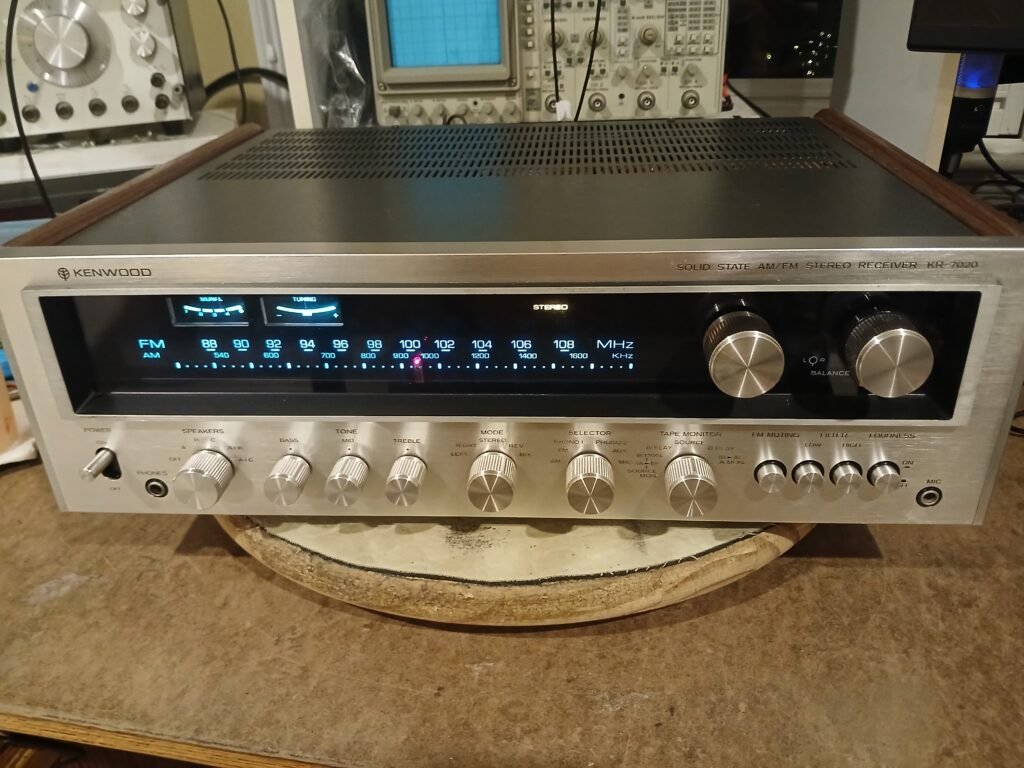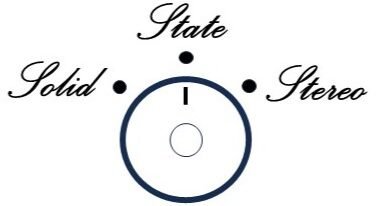Kenwood KR7020 (= KR7400)
$400

Examples of interior restoration results (click on photos to expand)
Exterior photos
Restoration notes
Beyond the list of standard restoration steps detailed on the main page, here are some added notes for this unit :
I acquired this receiver from Goodwill, so no background on any issues, etc. Exterior condition was very good but side wood panels were missing. I replaced those as shown in the photos above.
The Kenwood KR7020 is an “overseas” version of the KR7400. The only difference I see is that the faceplate is wider so the wood side panels abut into the back and are flush to the side edges of the faceplate (more European?) They are electrically identical with a shared service manual, schematic and spec sheet. It has ample power (rated at 63 watts per channel, 8 ohms) and has many nice features (including “mid” tone control and the ability to separate the preamp <=> amp sections).
Initial testing revealed sound quality issues that were resolved with a new protection relay, lots of switch cleaning and new caps (especially in the tone amp). The large variable (finned) capacitor in the tuner was very noisy and this was carefully cleaned/lubricated to address that issue.
I could tell this started life in the 240VAC world based on how the plastic guard was mounted in the back for the switch that selects 120VAC vs 240VAC modes. I remounted it to lock this switch in place for 120VAC.
Side note: Kenwood and others (famously Pioneer) liked to derive lower supply voltages from the high voltage rails used by the main amplifier (rather than have additional transformer taps at lower voltages). To do this, they relied on large power resistors to absorb the voltage drop and these get rather warm whenever the unit is switched on. Over the years, these resistors slowly cook components near them (especially capacitors) as well as the circuit board, itself. You can see evidence of this in the power supply photo (small blackened areas on the upper right). These are actually quite modest and not an issue. There were 2 smaller (1/2 watt) resistors for another supply output that were notably distressed looking so I replaced those. I always check for signs of overheating, and finding blackened areas anywhere but the power supply would flag a past (or current) problem needing to be checked out.
Functional testing complete/passed. The tuner performs very well (typical Kenwood strength) with good sensitivity and sound.
Cosmetically, this is a very clean example. There is one small area on the top left surface of the faceplate that has some marks (see photo). The wood side panels were freshly stained/sealed and have no issues.
Bench measurements
Kenwood spec for the KR7020 amplifier (both channels driving 8 ohms, max 0.3% harmonic distortion)
1000 Hz : 65 watts per channel
20 – 20,000 Hz : 63 watts per channel
My results (both channels driving 8 ohms, max 0.3% harmonic distortion)
1000 Hz : 78 watts per channel
20 – 20,000 Hz : 66 watts per channel
